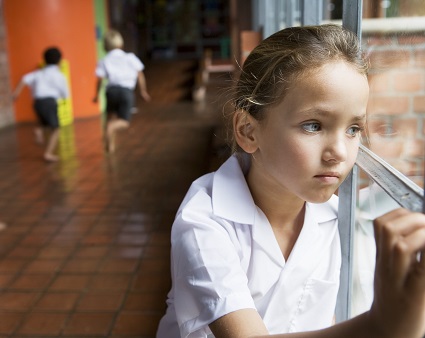
From back-to-school butterflies to extreme pandemic distress, anxiety feels inescapable these days. Of course, anxiety is not new. I have researched and treated children and families with anxiety disorders for more than three decades. We all worry and feel anxious from time to time. So, how do you know if an anxious child needs help from a clinical professional perspective?
Childhood Anxiety Disorders in a Young Child
The developmental trajectory for childhood anxiety disorders in toddlers or preschoolers typically involves a specific phobia, selective mutism, or separation anxiety. Recognizing anxious behaviors in preschoolers or young children is crucial. Without early treatment, they risk developing a social anxiety disorder, a general anxiety disorder, or a panic disorder as they age.
I recommend asking the parent to complete the Spence Preschool Anxiety Scale for a quick, reliable measure of anxiety in young children who can’t necessarily express their feelings. A more comprehensive assessment is the Anxiety Disorders Interview Schedule for Children, which I developed with my colleague, Anne Marie Albano, Ph.D., For young children, the interviews are conducted alone with parents. For older children, the interviews are conducted with the child and parents.
To help determine whether anxiety is impairing or interfering in children’s lives, I ask the following questions using the acronym FISH. (This can be applied to children of all ages.)
- Frequency — What is the frequency of the child’s anxious behaviors? Is it every day? Once a week? Once a month?
- Intensity — How intense is the child’s anxiety on a scale of 1 to 10?
- Severity — How severe is the child’s anxiety on a scale of 1 to 10?
- How long — How long have anxious behaviors occurred?
[Self-Test: Does My Child Have Generalized Anxiety Disorder?]
Childhood Anxiety: How to Help an Anxious Child
We want to be sure children and adolescents can distinguish between what they can control (their attitude) and can’t control (the pandemic).
I like to think about the “As of anxiety,” including arousal, attitudes, and avoidance. How does a child with anxiety disorders think about things? We all worry; an anxiety problem means you think about something more frequently, more intensely, and for much longer. The following tendencies among children should send up red flags:
- Overestimating a threat: “I’m going to get COVID. I’m going to die.”
- Difficulty tolerating uncertainty: “I don’t know what’s going to happen if I go to school. What’s going to be there? I don’t know that I can handle it.”
- Underestimating the ability to control a situation: “I never will be able to handle all this uncertainly. It is going make me really sick to my stomach or feel like I’m going to die.”
- Feeling increased responsibility: “If I get sick and I get my parents sick, it’s my fault. They will never forgive me.”
Avoidance is a common behavior in children with anxiety disorders. For example, they may not go to school, they stay away from social interactions, they won’t be alone, or they may stay away from places with germs and contaminations. Avoidance is at the core of anxiety. It’s also at the core of depression, which is why it is so important to reduce child avoidance behaviors.
There are several ways to do this. We can work directly with the child. We can work with the child and parents together. Or we can work with parents alone. All these instances emphasize teaching the child non-avoidance behaviors. This also can include providing parents with strategies to help their child to face their fears. This is our approach at the Yale Child Study Center’s Anxiety and Mood Disorders Program.
[Watch: Managing Anxiety in Children and Adolescents with ADHD and Learning Differences]
Most importantly, pay attention to any signs of anxiety. Severe anxiety can affect a child’s interactions with friends, family, and school life and become a clinically significant problem if it’s not recognized.
Childhood Anxiety Disorders: Next Steps
Wendy Silverman, Ph.D., is the Alfred A. Messer Professor of Child Psychiatry and director of the Yale Child Study Center’s Anxiety and Mood Disorders Program at the Yale University School of Medicine in New Haven, Connecticut. She is also a trainer at The REACH Institute, a New York-based non-profit that promotes evidence-based mental health care for children. The content for this article was derived, in part, from The REACH Institute’s “Back-to-School: Transitions” webinar, in which Dr. Silverman was a panelist.
SUPPORT ADDITUDE
Thank you for reading ADDitude. To support our mission of providing ADHD education and support, please consider subscribing. Your readership and support help make our content and outreach possible. Thank you.

